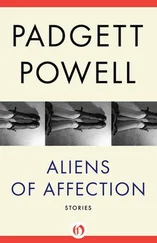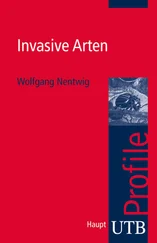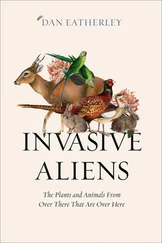Against the odds, the rabbit population started rising, and by the fourteenth century supported a growing export trade in their furs; in 1305, for instance, 200 skins were shipped out of Hull, and by 1398 a certain Collard Chierpetit was granted the right to send 10,000 rabbit pelts to Holland. No fewer than 4,000 rabbits were served at the 1465 investiture of the Archbishop of York and, a century later, the Swiss naturalist Conrad Gesner noted that: ‘There are few countries wherein coneys do not breed, but the most plenty of all is in England.’ It wasn’t until the late 1700s, however, that the wild population properly took off; rabbits had by then evolved into an altogether hardier proposition, able to capitalise on new rotational field systems, which provided a year-round supply of food. The wholesale removal of weasels, pine martens, polecats, stoats, foxes and other predators by gamekeepers tasked with preserving pheasant and partridge, also indirectly benefited the rabbit whose ubiquity helped consign their high-class status to history. Rabbit farming continued in Britain right up to the twentieth century, with numerous large coastal semi-natural warrens in places like Cornwall and South Wales continuing to be protected from poachers, suggesting that the species retained a certain economic value until modern times. Nevertheless, this once-prized commodity fit for a king generally came to be dismissed as a pauper’s ration, and at worst, vermin to be eradicated.
Rabbits have long had religious connotations, most likely anchored in the supposed proclamation of the sixth-century Pope Gregory that rabbits, or more precisely their foetuses, were fit for eating on fast-days. Plucked from the womb’s watery environment, the reasoning went, laurices could be deemed honorary fish, not warm-blooded animals which would have been off limits. But this turns out to be a case of sloppy scholarship: the Pope never made any such decree. Instead, it was his contemporary and namesake, Bishop Gregory of Tours who had pronounced on rabbits, and merely to report on the practice of laurice consumption during Lent. Chinese whispers did the rest.
Writing in the 1990s, the archaeologists David and Margarita Stocker nevertheless detected an allegorical significance in ‘defenceless’ communities of rabbits being ‘herded and managed like sheep’ by a Christ-like warrener, before emerging ‘from the ground to fulfil themselves’. Warming to their theme, the Stockers evidenced the deliberate, prominent and ‘symbolically meaningful’ placement of pillow mounds within monastic precincts at Sawtry Abbey in Cambridgeshire, Nun Coton Priory in Lincolnshire and Croxton Abbey in Leicestershire. In his own documentary research on rabbits, however, David Gould has found little to bolster, or at least privilege, the sacred connection. ‘In the medieval period it’s basically the elites who first owned rabbits,’ he said, ‘and that meant both lay and clerical elites. In fact, when you look back through the records, warrens are more often linked to secular aristocracy.’
As it happened, Bruton had something to say on fish too (another reason David had suggested we meet here). We trudged to the crest of the dovecote-dominated knoll which gloried in the name of ‘Lusty Hill’. Was this a reference to the renowned reproductive capacity of its former livestock? That was a question for another day. Passing two smaller pillow mounds on the summit, we descended the far side to a series of boggy depressions, the remains of ancient and overgrown ponds. ‘I’m not an expert, but I think they’re medieval and older than the pillow mounds,’ said David. These artificial pools – fed by a stream which flows on to the River Brue – once supplied fresh fish to Bruton Abbey.
Whether or not rabbits were regarded as fish and kept and eaten for their ecclesiastical significance is unclear, but actual fish certainly were favoured by religious orders across continental Europe and, between the ninth and eleventh centuries, appeared ever more prominently on the table at Benedictine monasteries. The stricter regimes at Cistercian and Carthusian communities resisted even fish but later allowed the consumption of small quantities, or ‘pittances’. The medieval period coincided with a massive expansion of marine fishing which targeted herring, cod and hake. While coastal communities enjoyed fresh catch, those living far inland had to make do with salted or dried fish. The elites, though, abhorred preserved fish and instead focused on locally caught freshwater species, like eels, which were trapped as they migrated up or downstream. The younger specimens were grown in stock ponds, either purpose-built or adapted from existing millponds, moats and former river channels.
Meanwhile in Britain, the eating of fish also grew in popularity in the centuries following the Norman Conquest. The people of this island nation had always enjoyed access to seafish, but the continental pond culture centring on freshwater varieties was nevertheless imported, as much for its prestige as for its nutritional benefits. Like deer parks and coneygarths, Britain’s fishponds were first associated with the wealthy, and by 1300 could be found on the estates of clergy, aristocratic landowners and the Crown from Wiltshire to Yorkshire – the ones at Bruton being surviving examples. In time, husbandry techniques advanced enough to provide a steady food source and aquaculture became a widespread commercial enterprise, although freshwater fish retained its cachet. The sorts of fish best able to endure the warm, slow-moving, turbid and oxygen-poor water of medieval ponds were favoured. That meant roach, tench, chub, dace, perch, and especially pike and bream. To this roll-call of hardy natives would later be added a foreign fish whose origins are as murky as the waters it frequents.
The common carp is today among the world’s most important food fishes. Three million metric tonnes are grown annually across 100 countries, equivalent to a tenth of all freshwater aquaculture production. It’s easy to see why: the fish breeds and grows fast, tolerates a wide variety of environmental conditions and eats pretty much anything that can be sucked up by its telescopic mouthparts. The koi carp, a colourful variant developed in a mountainous region of Japan, is perhaps the world’s most popular outdoor ornamental fish and almost as well travelled as its edible cousin. Meanwhile, the species supports an angling market which in Britain alone is worth close to a quarter of a billion pounds each year.
The ancestral common carp evolved close to the Caspian Sea around 2.5 million years ago and, taking advantage of the proliferation of waterways during warmer interglacial periods, expanded its range east into mainland Asia and west to the basins of the Black and Aral Seas. The European version of the common carp appeared in the Danube river some 10,000 years ago. And there the fish might have stayed were it not for its discovery by the Romans – keen aquarists – sometime in the first or second century CE. (Carp bones dated to that period have been identified at the site of a former Roman frontier fort near Iža in Slovakia.) Able to survive out of water and without food for prolonged periods, the carp were transported, possibly wrapped in wet moss or sacking, to the piscinae (reservoirs) of Italy as gourmet items and pets.
Carp however, live specimens at least, weren’t present in Roman Britain, and don’t feature in European pond culture until around the twelfth century. The first written reference on this side of the Channel comes from the kitchen accounts of King Edward III at Canterbury, dated to 1346, which show a carp and eight pike costing 22 shillings. The carp in this case was probably an imported specimen, because the fish doesn’t seem to have been stocked in this country for another century. In 1496, The Boke of St Albans – attributed to Dame Juliana Berners, prioress of Sopwell nunnery – describes the carp as a ‘deyntous [delicious] fisshe’, and then in 1532 ‘Carpes to the King’ appears in Henry VIII’s Privy Purse expenses for that year.
Читать дальше











